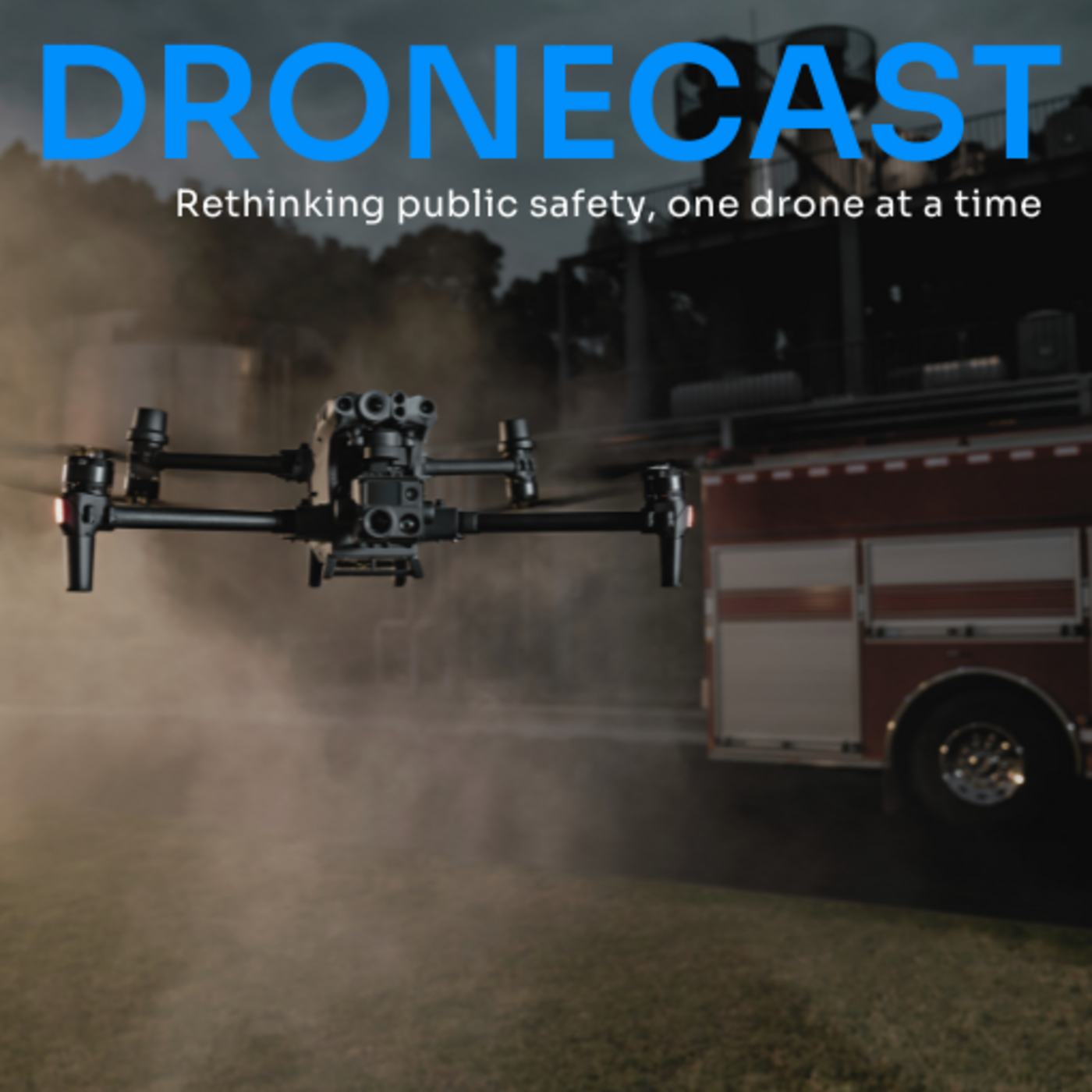From Tech Surveillance to Counter-Drone Innovation
November 12, 2025

In this Veterans Day release of DroneCast, host Joe Kearns sits down with DJ Smith — recently retired from the Virginia State Police after 31 years of service and now part of Amazon Global’s SPEAR STT organization. A national leader in counter-drone operations, DJ reflects on his decades in technical surveillance and how his expertise continues to shape CUAS innovation and airspace security in the private sector. He discusses the urgent need for smarter drone legislation, the growing threat of unauthorized drone activity, and how innovation continues to safeguard the skies — and those who serve beneath them.
In honor of Veterans Day, this special episode of DroneCast celebrates those who serve — not just on the frontlines, but also in the critical missions that protect our nation every day. Host Joe Kearns welcomes DJ Smith, a recently retired 31-year veteran in public safety who served as the Unmanned Aerial CUAS Program Coordinator for the Virginia State Police and now joins Amazon Global’s SPEAR STT organization.
From his early days experimenting with drones to becoming a national leader in counter-drone defense, DJ shares how dedication to safety, education, and innovation drives his mission. He discusses how counter-drone technology is evolving to defend against emerging threats, why legislative reform is vital for local enforcement, and how real-world testing in Virginia — and now his work in the private sector — are setting a new standard for airspace security.
DJ also highlights how collaboration between agencies mirrors the teamwork and discipline found in military service — proving that protecting our homeland extends beyond the battlefield. This episode is a powerful reminder that service takes many forms, and innovation is the next frontier of defense.
What You’ll Learn:
- How counter-drone legislation impacts state and local enforcement capabilities
- The importance of detection, tracking, and decoding in modern CUAS operations
- How Virginia is pioneering real-world drone detection and airspace awareness
- Why correctional facilities could be the testbeds for mitigation tools
- How remote ID and decoding could reshape national drone policy
- The role of education in bridging the knowledge gap for law enforcement and the public
- Why counter-drone technology and DFR programs must evolve together
- How data-driven insights can guide smarter legislative carve-outs
Helpful Links:
- Fill out the Audience Form here.
- Explore more episodes and insights on the official DroneCast website: https://www.dronesense.com/dronecast
- Ready to launch or enhance your drone program? Get Started with DroneSense today!
- Parrot, ANAFI UKR Tech Sheet: https://5n8jp.share.hsforms.com/2oWfNvmGLRCeKUWcJGtFbBg
Episode Highlights:
- [00:06:11] Education is the First Line of Defense – DJ explains that the biggest challenge in counter-drone work isn't technology—it’s education. Misconceptions persist among hobbyists, law enforcement, and even legislators, making it vital to teach what ‘safe and legal flight’ really means.
- [00:09:56] Legislative Limitations on Detection – Smith outlines how current laws restrict agencies to passive detection only, preventing them from decoding or identifying most drones. He discusses how this limits situational awareness and why federal carve-outs are needed.
- [00:16:16] Virginia’s Real-World Testing – DJ describes how the Virginia Innovation Partnership Corporation deployed mobile detection trailers statewide to create a snapshot of airspace activity—revealing hundreds of weekly drone flights, most undetected by standard tools.
- [00:23:29] The Case for Mitigation Carve-Outs – Correctional facilities, Smith argues, offer controlled environments ideal for testing mitigation tools safely. He details how drones are used to smuggle contraband, even weapons, into prisons—underscoring the urgency for legislative change.
- [00:25:31] The Economic Stakes of Drone Espionage – From shipyards to chemical plants, DJ warns that industrial espionage via drones costs the U.S. billions annually. He calls for detection rights at critical infrastructure sites to protect intellectual property.
- [00:31:47] Lessons from 9/11 – Smith emphasizes the need for a national reporting system for drone incidents, drawing parallels to intelligence gaps before 9/11. He argues that connecting small signals can prevent large-scale security threats.
- [00:32:44] The Future of Detection and Mitigation – DJ outlines the evolution of advanced decoding, AI-driven identification, and soft cyber takeover as the next frontier for CUAS technology—balancing security and safety in shared airspace.
Dronecast: Rethinking Public Safety, One Drone at a Time Podcast is handcrafted by our friends over at: fame.so
Previous Guests include: Matt Rowland, Jason Burnside
Check out our 3 most downloaded episodes:
Previous Guests include: Matt Rowland, Jason Burnside
Check out our 3 most downloaded episodes: